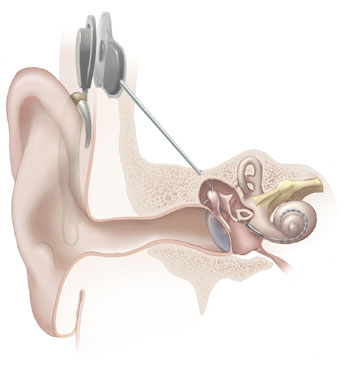Hearing Technology
In 2001, conservative talk show host Rush Limbaugh found himself having difficulty hearing callers on his radio show. Doctors eventually diagnosed Limbaugh with an auto-immune ear disease, which would leave him virtually deaf. A Cochlear implant was a great option for Limbaugh and the procedure was performed in December 2001 and after outpatient auditory therapy he returned back to work in January of 2002. Now seven years after the surgery, Limbaugh booms across the U.S. airwaves without missing a beat.
 Losing a portion of hearing is something that most adults expect as they age, but numbers of children are born each year with some level of deafness. Countless others lose their hearing due to an injury in adolescence or young adulthood and many unexpectedly like Limbaugh.
Losing a portion of hearing is something that most adults expect as they age, but numbers of children are born each year with some level of deafness. Countless others lose their hearing due to an injury in adolescence or young adulthood and many unexpectedly like Limbaugh.
Technology has helped to restore hearing with the breakthrough invention of the Cochlear implant in 1982. And, even though it has been around for almost 20 years, it is just now becoming the standard of care for people who have severe to profound hearing loss.
 A Cochlear implant is a small, complex electronic device that can help to provide a sense of sound to a person who is profoundly deaf or severely hard-of-hearing. The implant consists of an external portion that sits behind the ear and a second portion that is surgically placed under the skin. An implant has the following parts:
A Cochlear implant is a small, complex electronic device that can help to provide a sense of sound to a person who is profoundly deaf or severely hard-of-hearing. The implant consists of an external portion that sits behind the ear and a second portion that is surgically placed under the skin. An implant has the following parts:
- A microphone, which picks up sound from the environment.
- A speech processor, which selects and arranges sounds picked up by the microphone.
- A transmitter and receiver/stimulator, which receive signals from the speech processor and convert them into electric impulses.
- An electrode array, which is a group of electrodes that collects the impulses from the stimulator and sends them to different regions of the auditory nerve.
More information.
Cochlear implants do require surgery and coupled with intensive post implantation therapy, can help young children to acquire speech, language, and social skills. Most children who receive implants are between two and six years old. Early implantation provides exposure to sounds that can be helpful during the critical period when children learn speech and language skills. In 2000, the FDA lowered the age of eligibility to 12 months for one type of cochlear implant. An implant does not restore normal hearing in older patients, but instead a useful representation of sounds in the environment which help him or her to understand speech.
Most implant patients can encounter problems with the reverberation and distortion of sound bouncing off of floors and walls. Imagine how a child who was once deaf feels reentering elementary school for the first time. Many things can be done to help him or her adjust. Adding rugs, tennis balls to the bottom of chair legs, sound panels and even cork boards are great for absorption of sound in a room. The location of the classroom is also just as important. For example, is it next to the playground or gym and even an air conditioning unit? These small changes can really assist in better hearing and overall learning.
According to the Food and Drug Administration (FDA) in 2006 over 112,000 people had received implants in the world. In the United States alone an estimated 23,000 adults and 15,500 children have now received them. This technology is truly changing the way a child learns and what opportunities he or she will now be able to explore, but also helps in preventing adults from losing those precious sounds that we become accustomed to hearing.
In an effort to write additional posts on this topic that give annecdotal stories of success, if you or someone within your family has Cochlear Implants we urge you to contact us at articles@semo.net.
For more information, please visit cochlearimplantsonline.com
